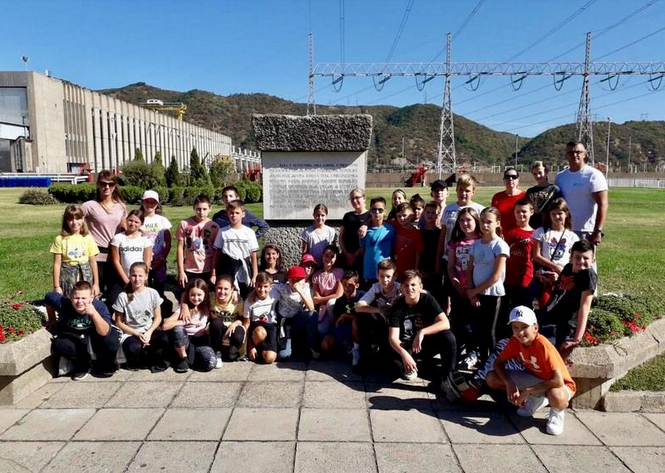School trip u Kladovo
On a sunny Sunday morning we went on an excursion to Kladovo.
On our way through the Djerdap Gorge the first stop was the spectacular archaeological site of Lepenski Vir where we were introduced to the remains of one of the oldest Stone Age cultures. Lepenski Vir was discovered and researched by our famous archaeologist prof. Dragoslav Srejovic in 1960s. Archaeological research confirms that the area was inhabited 10,000 years BC. Lepenski Vir archaeological site is a kind of open-air museum where visitors can see the famous fish shaped stone
sculptures , jewelry and tools made of bones and stones, as well as carved stone plaques with symbols and signs that probably represent the letter of the people of that time.
The town of Kladovo welcomed us with a light breeze from the Danube and the smiles of the locals. On the second day we started exploring one of the biggest attractions of the Negotin region – the Vratna stone gates. These high stone arches represent the remains of former caves. These stone gates are a very rare occurrence in the world, and there are three Vratna's gates that are hidden
very well and only the most persistent ones are able to reach them. After a tough hike, we rested at the port of Vratna Monastery.
Our next stop was Roman Diana. The old fortified city on the bank of the Danube was erected during the reign of Emperor Trajan as one of the military bases that provided free navigation on the Danube and where the preparations for the conquest of Dacia were made. Even today, archaeological research is being carried out on the site. From Diana we could see the Djerdap hydroelectric power station. During the visit of the
hydroelectric power station, we learned that it was built in cooperation with Romania and that has produced a significant portion of electricity for the needs of the inhabitants of our country since 1972. At the same time, it regulates traffic with barriers on the Danube.
Navigating the Djerdap Gorge is a special experience that cannot be described. Floating through Mali and Veliki Kazan we saw Decebal’s head carved into the hill on the Romanian side and Traian’s board on our coast of the Danube. We also learned where the Danube is the deepest and where it is
the narrowest throughout its course.
On the last day we visited Felix Romulian, also known as Gamzigrad. This beautiful palace of the Roman Emperor Galerius is located near Zajecar and since 2007 is on the UNESCO World Heritage List. The floor mosaics, whose remains we could see on the site and in the Museum of the City of Zajecar are especially famous. On this excursion we saw, heard and learned a lot. It could be said that this year the theme of the excursion was Traces of the Romans through Eastern Serbia. We can't wait to find out where the road will take us next year .


